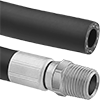Filter by
Shape
Color
Clarity
Maximum Temperature
Performance
DFARS Specialty Metals
For Use With
Flexibility
Minimum Temperature
Hardness
Density
Raw Materials
Fluid Handling
Measuring and Inspecting
Containers, Storage, and Furniture
Fastening and Joining
Fabricating and Machining
Lighting












































